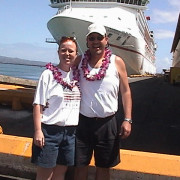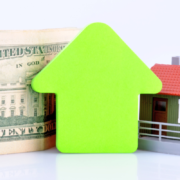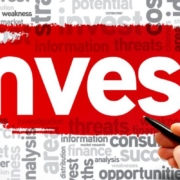How Much Should I Charge For Rent On My Income Property?
|
Getting your Trinity Audio player ready...
|
By Joe Arias
Becoming a real estate investor gives a person the fantastic opportunity to generate passive income, but if you want to be successful, you need to have a strategy. According to HUD, there are between 10 million and 11 million individual investor landlords managing an average of two units each in the United States. While it may be somewhat easy to become a landlord, it is challenging to be a successful landlord who brings in a profit each month.
article continues after advertisement

Being a landlord should be treated like being a business owner and should include a business plan. Your income property business plan should include things like financing options, marketing strategies, budgeting for maintenance and repairs, and your long-term goals. It should also include identifying your ideal tenant but be wary of fair housing laws. When determining who you would like to rent to helps you narrow down the type of amenities your property should have. Prospective tenants may demand specific amenities like a pet-friendly rental with a yard or that the unit is within close proximity to public transportation and schools. These amenities may call for higher rental rates but could also come with their own headaches and affect your return on investment.
Residential Properties
Single-family home or townhome, condo, or manufactured, pricing strategies are pretty much the same. Many landlords use the 1% rule. This rule suggests charging 1% of the home’s value for rent. In reality, it is not that simple and there are other factors to consider.
Where Should I Start?

Whether you are getting ready to purchase an investment property or preparing to put it on the rental market due to tenant turnover, when deciding how much to charge for monthly rent you need to figure out a rental price that is high enough to cover your mortgage and operating expenses while ultimately giving you extra cash each month. But, you can’t just set a rental rate based on how much profit you’d like to make on your rental property. Unfortunately, it doesn’t work that way. Many factors go into determining how much to charge for rent. Let’s discuss them.
First, let’s talk about market rent. Market rent refers to the average rent price for a rental property and is determined by the real estate market value. When you get ready to list your property for rent, it is essential to see what your competition, other landlords, are charging for their rates. Some factors which affect the amount you can charge in rent are:
- Square footage
- Number of bedrooms
- Number of bathrooms
- Garage or covered parking spaces
- Pet policies
- Property type (single-family home, condo, etc.)
It is a good idea to research property values in the area where your property is located. This part of the process should be pretty simple. You can either look at one of the many online home search websites to do your research or ask your real estate agent to give you access to an online portal through your local MLS. Either way, you will be able to see what is available in your area filtered out by the homes that have similar features.
Depending on the type of property you have purchased, there may not be an identical comp to base your price on. One way around that is to look at the price per square foot in your neighborhood in properties as similar as you can find. Even if your property is 1200 square feet and the house down the street that just got rented out is 1600 square feet, you can still look at that number to help you determine your rate. So if the 1600 square foot house rented for $2,000 per month, that would make the price per square foot $1.25. You could then base your price on that number by multiplying $1.25 by 1200.
Rental Property Expenses

As we discussed, you cannot just set a rental price based on how much money you need to make in order to cover expenses and generate a profit. At the same time, you need to be aware of your costs so that you can set the price high enough to make a profit. When determining how much you will need to charge for rent each month, there are some additional, not so fun considerations to take into account.
These include:
- Mortgage payments
- Property taxes
- Insurance
- HOA fees
- Property management fees
- Maintenance fees
- Rental income taxes
- Utilities
Each of these items are additional expenses that you will have to cover and can vary by city or even neighborhood you purchase in. These fees are typically the same year-round, so it is somewhat easy to put them into your plan when working to determine the monthly rental rate.
Commercial Properties

The process of arriving at a rental rate on your commercial property is similar to that of a residential home.
You will need to look at similar properties to what they are renting for, just like you would with a residential property. In general, you would look at the property’s size, location, and number and type of tenants that the property currently has. In addition to these somewhat basic factors, you also need to consider the following:
Charging by usable square footage: This is the amount of space that the tenant uses alone, not including common areas that any tenant can use. So in an office building, it would be the actual office space versus the building’s lobby.
Leases are much more complicated: There are multiple ways to enter into a commercial agreement lease, here are three primary lease structures:
- Triple Net – Tenants pay their base rent plus taxes and insurance on the building. These are the most common types of leases.
- Full-Service Gross – Tenants pay the landlord on fee, and the landlord is then responsible for all other expenses like taxes, insurance, maintenance, and utilities. These types of leases are common in office properties.
- Modified Gross – Landlords pass on some but not all of the cost of utilities, maintenance, janitorial, etc.
As the landlord, you will have to figure out much to charge for base rent and calculate how much the additional expenses will be. You still want your lease price to be attractive to potential tenants and competitive against other property managers.
Something else to consider is that commercial leases tend to last for more extended periods of time. Typically the lease period can be three to five years, so it is imperative to choose an amount that will hold up to that longevity.
Unless you are a seasoned investor, it may be wise to work with a property manager to help you with the day to day dealings. They can even help you determine how much to charge in rent.
article continues after advertisement

There is So Much to Consider, and I’m Overwhelmed
Looking at all of these factors is overwhelming. Rental rates can change by the week, and doing all of this research only to find that prices have increased or decreased before you can get the property listed can be discouraging. It is essential to understand why prices change so quickly. Like any other product on the market, supply and demand is always a factor in how much something costs.
Some landlords may choose supply and demand as the only factor in determining a rental rate. Others may place their rates somewhere in between the neighborhood market rate and HUD’s fair housing rate. Whatever strategy you choose, make sure your property stacks up to other properties in the area and you should be okay.
Final Thoughts

Pricing your investment property, be it residential or commercial, is one of the most important factors in being a successful investor. If you do not charge enough to cover all of your expenses, you will lose money making your investment a bust. Very simply, look at the current market rates based upon the size and condition of your property in order to determine how much to charge for rent.


Joe Arias
Joe Arias and his partners have flipped hundreds of properties in the Southern California Region. He has developed cutting-edge systems to simplify and scale the entire remodel process that can easily be applied to flipping, rentals, wholesaling, and other passive income strategies. More recently, Joe founded a real estate investing education company called RealSuccess Investments, allowing him to share his tools and systems with hundreds of up-and-coming investors.
RealSuccess is focused on education on flipping, rentals, passive income, and wholesaling.
Joe is also a best-selling author. He has written 4 books: Finding your RealSuccess, First Steps to Flipping, R stands for Rentals and Retirement, and Wholesaling Real Estate.
“I came from Argentina when I was 20, I am 40 years old now. I didn’t know anyone, I am CERO generation, usually people say, I am first or second generation but I was the one that crossed the border, no language, no friends, no family, no money, nothing, nada… If I can do it, anyone can.”
From a young latino immigrant to a celebrated real estate investor, Joe is a true testament to hard work and discipline. As an investor, he has made it his mission to help others achieve financial freedom while enjoying living a life of passion, fulfillment, and empowerment.
RealSuccess Website
Personal Instagram:
https://www.instagram.com/joeariasinvestor/
Real Estate Investment- Instagram:
Instagram: https://www.instagram.com/realsuccesseducation/
Video For Finding Money from All Day Training (10 Hour Seminar)
https://vimeo.com/manage/videos/528446162
1 Hour Webinar
https://vimeo.com/manage/videos/530996751
Amazon Book#1:
Amazon Book#2
Learn live and in real-time with Realty411. Be sure to register for our next virtual and in-person events. For all the details, please visit Realty411Expo.com or our Eventbrite landing page, CLICK HERE.












